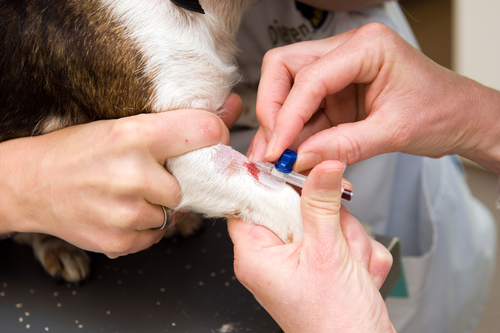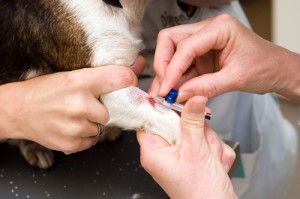Duchenne Muscular Dystrophy Experiment in Dogs Restores Key Dystrophin Levels

 A study entitled “Forelimb Treatment in a Large Cohort of Dystrophic Dogs Supports Delivery of a Recombinant AAV for Exon Skipping in Duchenne Patients” describes the positive results of using a recombinant adeno-associated virus vector to restore dystrophin levels in dogs affected with Duchenne muscular dystrophy. The experiment could lead to new methods of strengthening muscle in humans with the disease. The study was published in the Molecular Therapy journal.
A study entitled “Forelimb Treatment in a Large Cohort of Dystrophic Dogs Supports Delivery of a Recombinant AAV for Exon Skipping in Duchenne Patients” describes the positive results of using a recombinant adeno-associated virus vector to restore dystrophin levels in dogs affected with Duchenne muscular dystrophy. The experiment could lead to new methods of strengthening muscle in humans with the disease. The study was published in the Molecular Therapy journal.
Duchenne muscular dystrophy (DMD), the most frequent neuromuscular disease in children, is a form of muscular dystrophy that is caused by a mutation within the Dystrophin gene located in the X chromosome. Dystrophin protein is an essential component of muscle tissue. Its loss or deficiency leads to degeneration, mainly in the legs and pelvis, but also progresses to other muscles, including the cardiac muscle.
A team of researchers at the Atlantic Gene Therapies, Généthon and the Institute of Myology developed a treatment for DMD that uses an AAV vector (Adeno Associated Virus) to restore dystrophin levels in affected dogs. The treatment specifically aims to skip exons 6, 7 and 8 of the dystrophin gene. Golden retrievers with DMD (n=18) were injected with the dystrophin vector, with increasing amounts of vector in the forelegs, and were then followed for 3.5 months after injection.
[adrotate group=”3″]
The team observed no adverse reaction in the treatment, being well-tolerated in all tested animals. Increased levels of dystrophin expression were correlated with a higher amount of vector injected, with the highest dose leading to an 80% of dystrophin expression in myofibers. Accordingly, strength improvement was also observed with increasing vector doses, as observed with histological, nuclear magnetic resonance. The authors showed that the treatment induces a stable and prolonged effect, therefore skipping the necessity of re-administering the therapeutics. This was the case in a previous test method with injection of antisense oligonucleotides, which are already used in clinics.
Thus, the authors highlight that their results lay the groundwork for a phase 1 / 2 trial to test loco-regional injection in the upper limb of non-ambulatory Duchenne muscular dystrophy patients. The application will be delivered to regulatory authorities in 2015.






